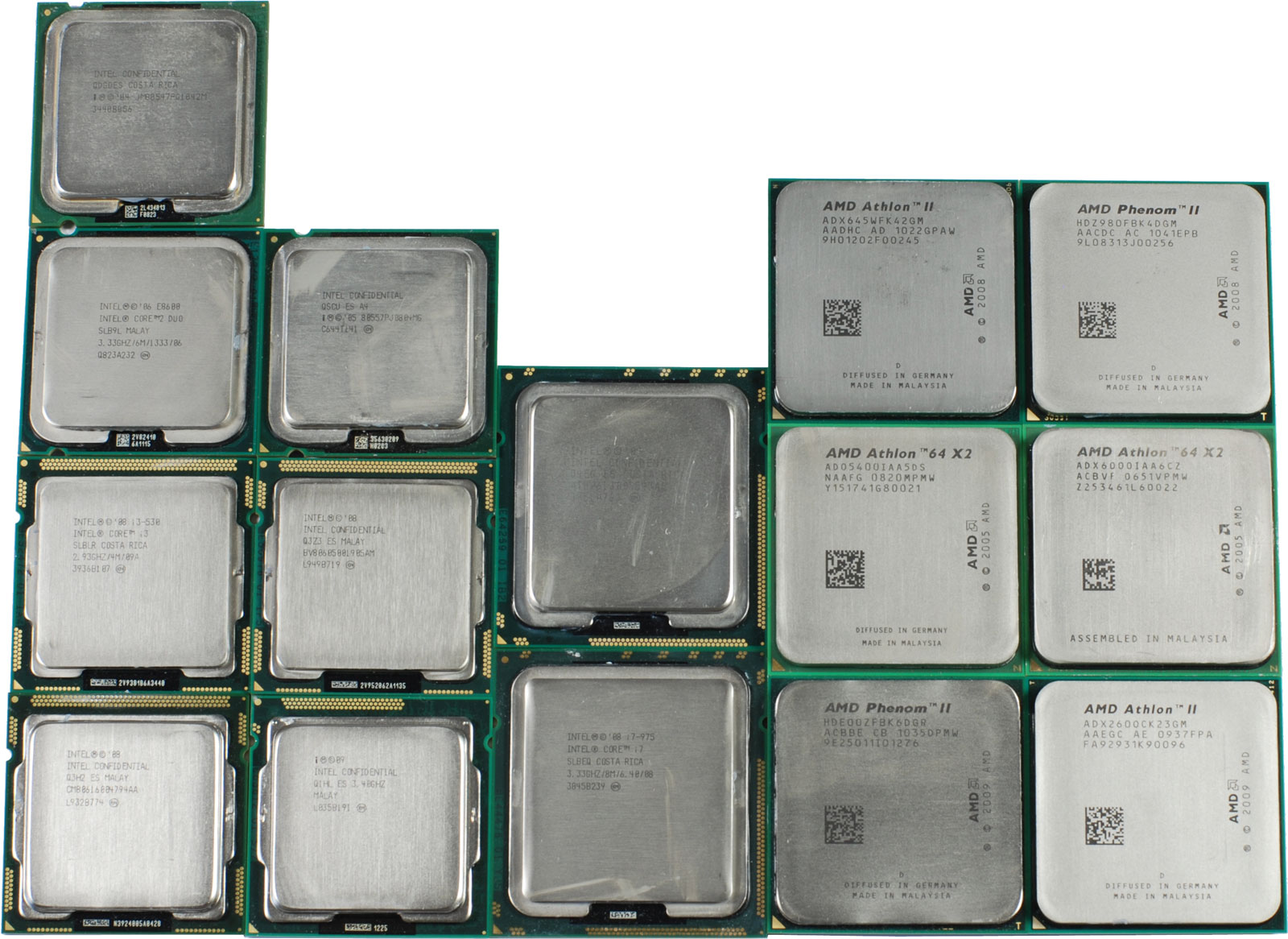Tom's CPU Architecture Shootout: 16 CPUs, One Core Each, And 3 GHz
The CPU landscape is really complex. Both AMD and Intel offer tons of different models. But how would today’s processors perform if they didn't have multiple cores? We take 16 different CPUs and compare them all using a single core running at 3 GHz.
A Real (Theoretical) Performance Shootout
Ever since AMD and Intel started cramming more processing cores into their CPUs, potential performance has grown faster than it did back when single-core CPUs were king thanks to parallelization. Back then, pushing higher frequencies and improving performance per clock were the only ways to speed things up. Now, a developer has to optimize his application to take advantage of multiple cores. But doing so enables scaling that simply wasn't possible before.
We all know that more advanced manufacturing technologies are paving the way for more cores per CPU, and that clock rates are slowly creeping up as well. But how have AMD and Intel improved the performance each core is capable of delivering at a given frequency? Are today’s CPUs any faster than a five-year-old Core 2 if you compare a single core at the same speed? We grabbed 16 different processors from both companies and ran our latest benchmark suite with each operating at 3 GHz. This story examines how they all do in what most folks would consider a very experimental shootout between artificially-created single-core CPUs introduced in the past five years.

Prerequisites and Processors
In preparation for this article, we had to look at the processors available to us for benchmarking. Of course, we wanted to include AMD’s and Intel’s latest products sporting four and six cores. We also thought it'd be important to include a larger number of dual-core products. After all, much has changed since the Athlon 64 X2 and Pentium 4 ruled the jungle. Our selection includes first- and second-generation Core processors with two, four, and six cores, plus Phenom II, Athlon II, and Athlon 64 X2 models.
It's really a challenge to find motherboards for a job like this if you really want to limit core usage in the BIOS. We had to try a lot of potential subjects before finding one for each CPU interface that'd let us modify the number of active cores. And since we couldn't be sure that disabling processing cores in the BIOS would physically turn them off, we refrained from measuring power consumption.
The 3 GHz Battle
This comparison wouldn't have made much sense if we ran each processor at its default clock rate. In addition to limiting the number of active cores to one, we also locked down the frequency of each chip to 3 GHz. We also switched off all power-saving mechanisms like Cool'n'Quiet and SpeedStep, as well as performance-enhancers like Turbo Core and Turbo Boost. As a result, we can be sure that the conditions for testing each CPU are identical. There are only two exceptions. Our Clarkdale- and Lynnfield-based chips run at 2.93 GHz. We could have hit 3 GHz by tweaking base clocks and multipliers, but that would have altered the results. Losing 66 MHz is measurable, sure, but it shouldn't alter the bigger picture.
Get Tom's Hardware's best news and in-depth reviews, straight to your inbox.
Current page: A Real (Theoretical) Performance Shootout
Next Page Six-Core CPUs: AMD Thuban And Intel Gulftown